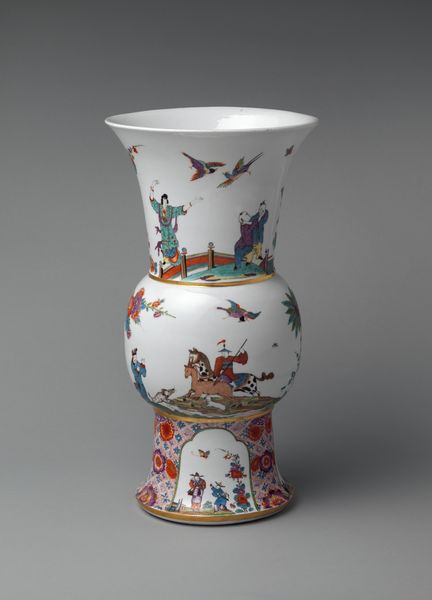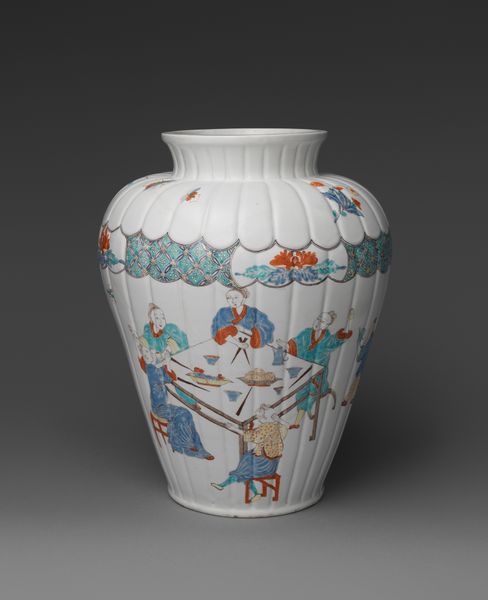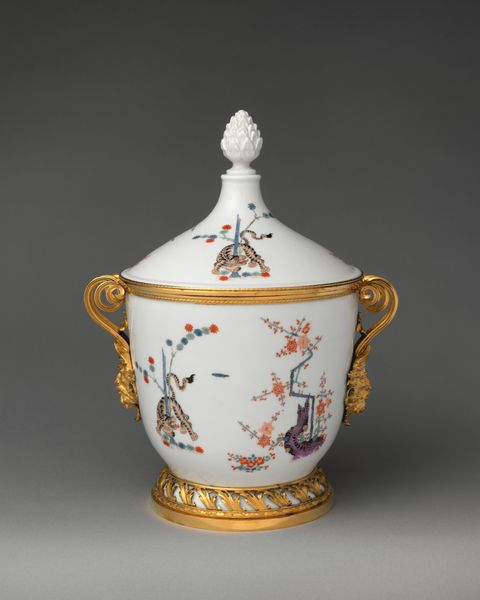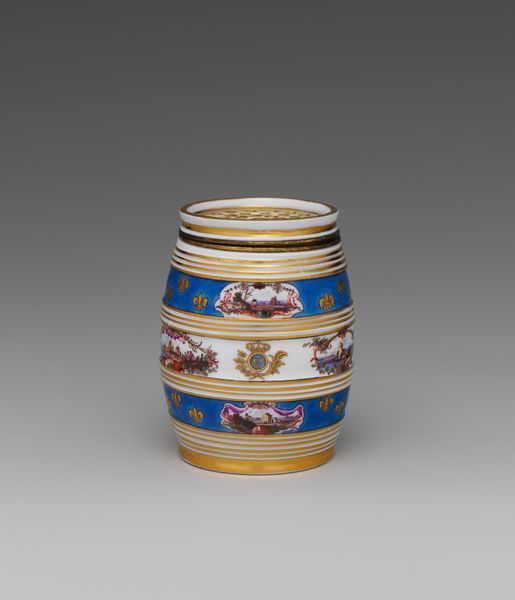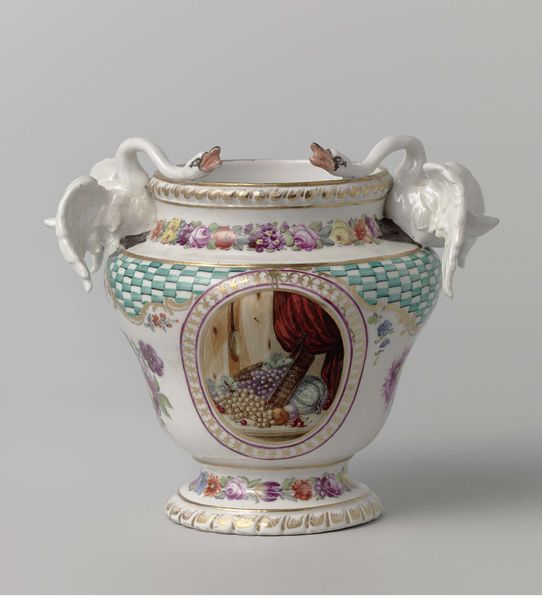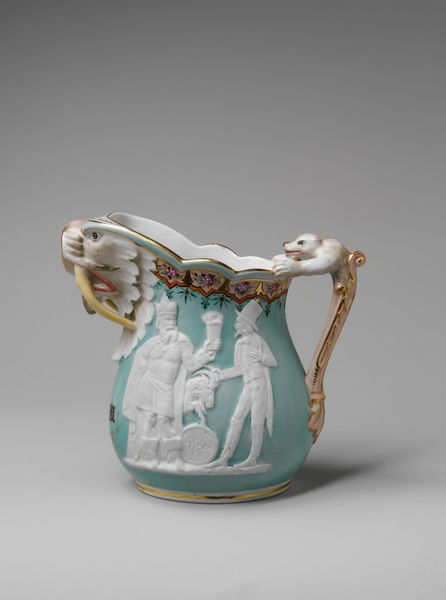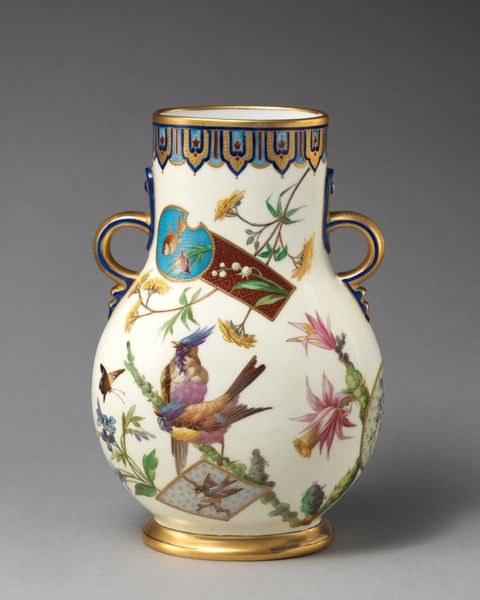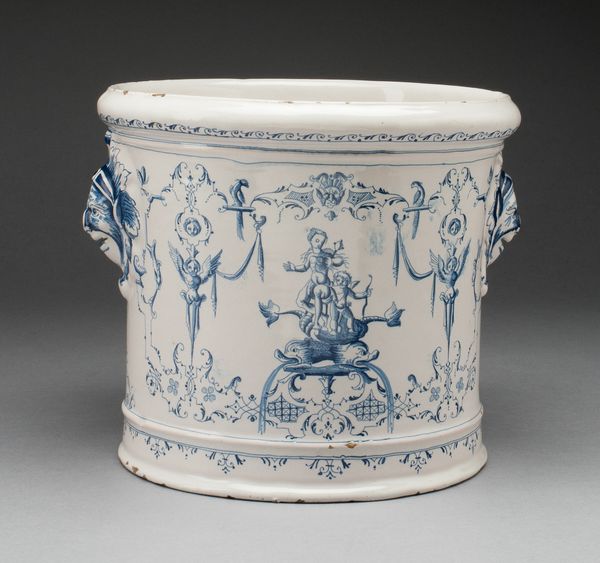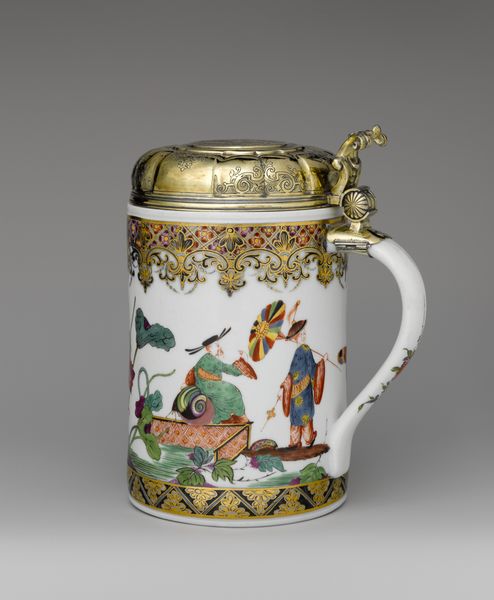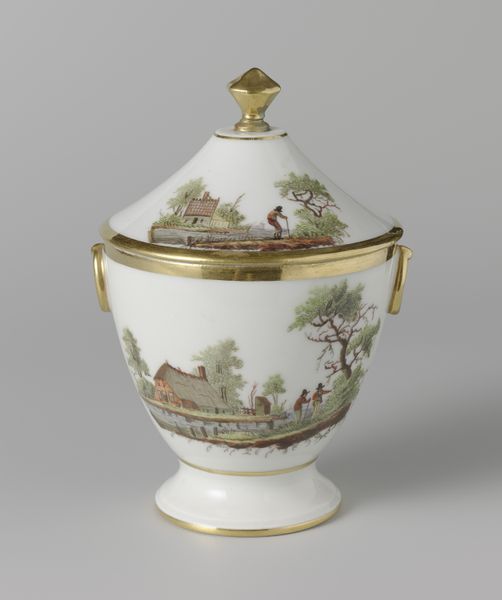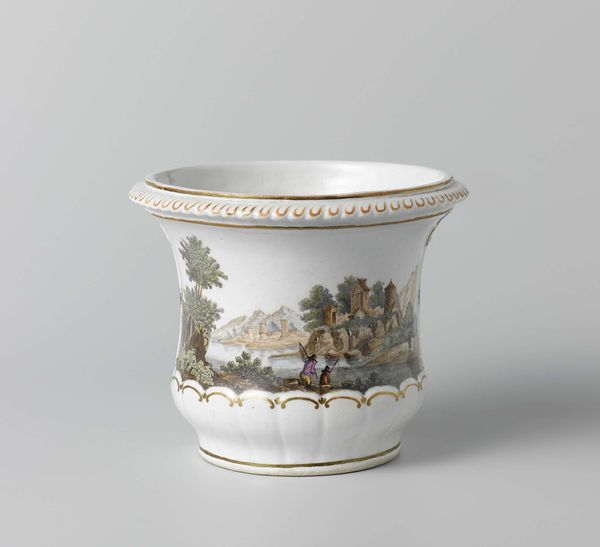
ceramic, porcelain, sculpture
#
asian-art
#
ceramic
#
porcelain
#
figuration
#
sculpture
#
decorative-art
#
rococo
Dimensions: Overall (confirmed): 4 5/16 × 5 11/16 × 4 7/8 in. (11 × 14.4 × 12.4 cm)
Copyright: Public Domain
Curator: I am immediately struck by its serene simplicity. The whiteness of the porcelain and the delicate hand-painted figures create an effect that is both ornamental and very calming. Editor: Yes, it has a quiet elegance, doesn't it? What we're looking at is an early 18th-century glass cooler, made by the Saint-Cloud factory, sometime between 1720 and 1735. Today, it lives at The Metropolitan Museum of Art. Curator: A glass cooler? Intriguing! I would never have guessed that’s its function just by looking at it. The handles in the form of expressive human faces give it such a captivating, almost mythological aura, despite its rather utilitarian purpose. The artisan clearly infused meaning even into the functional. Editor: Exactly. Let's not forget the socio-economic context. These types of decorative objects demonstrate a certain level of wealth. Porcelain itself, at this point, carried an aura of status and influence from Asia. Curator: Ah, you’ve touched on the Eastern influence. Note how the painted scene portrays figures in what is intended as Chinese garb, yet the Rococo styling—those theatrical flourishes and almost playful proportions—reveals the unmistakable European interpretation of the "Orient." We see such "chinoiserie" themes recurring time and again. It really does suggest a sense of longing or cultural fantasizing. Editor: The piece provides such insight into colonial fascinations, that almost voracious desire to interpret cultures outside the West. I can't help but think of the ethics surrounding cultural appropriation in those depictions. This wasn't about pure admiration, but a type of claiming or control over other identities and histories. Curator: It is a poignant reminder of cultural exchanges throughout history. Yet for me, the cooler’s persistent power comes from its unique melding of cultures and its intimate, almost spiritual essence embodied within a seemingly domestic item. It gives new context to a symbol in what might have otherwise been mundane. Editor: Indeed. By recontextualizing its role and origins, the cooler provokes conversations around power dynamics and aesthetic interpretations which, to this day, still challenge our assumptions. Thank you.
Comments
No comments
Be the first to comment and join the conversation on the ultimate creative platform.
